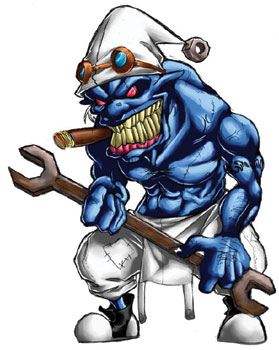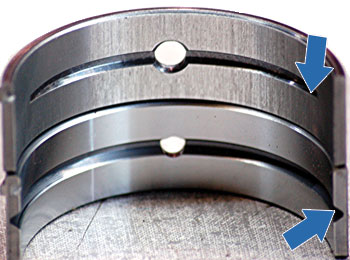 Adapted from Roy Berndt’s column in Engine Builder
Adapted from Roy Berndt’s column in Engine Builder
Since October is the month of screams and fright, of ghouls, goblins and gremlins (no, not the “classic” AMC car from the ‘70s – although that was scary enough) I am taking the opportunity to try and help eliminate one of them.
So, I thought this month I would discuss one of those “fright things” that has reared its ugly head for as long as I have been around the industry (well, the horse and buggy didn’t have this problem). I can also say that the solution has been the most effective in solving a problem that seems to creep up for engine builders and engine technicians everywhere.
Whether you’re working as a production engine remanufacturer or a custom engine rebuilder, this issue for years has shown up in warranty or complaint arenas like the nasty gremlin that it is. So let’s go on a “trick or treat” journey and don’t say I didn’t warn you.
Beware. . . ?
“Low Oil Pressure” is the frightening gremlin of which I speak! Here is the situation: your customer just got his vehicle back with your newly remanufactured engine. But wait: as he returns home, as far as he can tell, there is either no more — and quite possibly less — oil pressure than the previous engine had. Or, perhaps the driver noticed that the dreaded hot idle oil light flicker, even though the engine meets the minimum pressure allowed by the OE.
The Trick
What does the innocent consumer believe? That there was defective workmanship, or that you were trying to get away with something, like taking short cuts? No matter what the reality is, they will feel like you were taking advantage of them!?
So even though every component was machined to exacting specifications and tolerances, this problem rises up and grabs you like a mad pit bull with a death grip on your throat.
In more instances than I like to hear about in this industry, the engine is replaced with another and everything appears to be fine.
Once the engine in question is returned, all kinds of diagnostics then take place, from oil bleed testing to complete disassembly and re-measurement of all of the components. Oil pump and pick up testing is conducted. Cam bearing oil hole locations are examined, yet invariably, nothing stands out as being a problem.
The components from that engine may even be put back into the system and never see each other again as a complete unit. Yet none of the components are ever identified as a problem for any other assembly.
So, how does one explain the oil pressure gremlin? More often than not, you can’t, and you just move on to “it happened” and that is that.
I can’t give you a foolproof solution, but how about one that has been extremely helpful in eliminating the oil pressure gremlins from many an engine?
Before I give you that however, let’s take a quick moment to talk about what happens at the OE level when an engine is assembled.
There was a time when the words “select fit” was limited to import engine applications. This allowed engine specialists to install select fit engine bearings that were slightly larger or smaller in size, so that the optimum minimum bearing clearance could be obtained on each individual crankshaft journal, be it connecting rod or main bearing.
Well, that procedure exists in nearly every engine application being assembled worldwide today.
Regardless of how stringent the procedures and quality control are on the remanufacturing side, the use of select fit bearings is neither feasible, economically sound or even available in undersize bearings.
But, rising up again, as if from the dead, is the undying entrepreneurial spirit of the “engine builder.” What do I mean by that? It’s no trick — and for many situations they’re proving to be the perfect treat: main bearings that seem to completely eliminate the low oil pressure issue.
 The Treat
The Treat
No, these specially-designed bearings are not some voodoo magic, but, they are a way to address and combat the possible low oil pressure issues described above. What exactly are they? They are main bearings in which the oil grove is terminated prior to getting to the parting line.
As you’ll see in Figure 1, the oil groove terminates before it gets to the bearing parting line. This style of main bearing has accounted for a 15% or more increase in hot idle oil pressure.
So, on some spooky evening you are working late assembling an engine and you’re looking to eliminate some of those unexplained low oil pressure gremlins, contact your bearing manufacturer and ask about this style bearing and availability for the engine applications that you are building.
This helpful “trick” will really turn out to be a “treat” down the road.
A special note of thanks goes out to the engineering people of ProFormance Engines, Springfield, MO.











